 |
||
|
||
| ||
 Among all video processors from NVIDIA the GeForce2 MX is developing the most rapidly. It is not only manufacturers that have been releasing cards with different memory sizes and all possible frequencies, NVIDIA have been making various experiments with it as well: instead of one GeForce2 MX they announced a series of MX100/200/400. So, now we have got different modifications of cards of this family. One can come across some queer cards such as 64-MB ones based on the GeForce2 MX200 with a 64-bit memory bus, and such as lighted versions of old cards on the GeForce256 with a slow SDR-memory. Fortunately, the majority of companies are trying to improve models of their video cards bringing into them new interesting technologies and completing them with faster memory modules. Not so long ago we have already talked about such cards from ASUS, Gigabyte, Leadtek, SUMA. But there are also a great deal of flies in the ointment. I mean the video cards with very fast memory (5 ns access time) and a frequency decreased down to the standard level. Leadtek extols its WinFast GeForce2 MX SH Pro, having glued special stickers on the boxes which are crying about the super fast 5 ns memory, but for an ordinary user which is not keen on overclocking it doesn't matter a lot since such cards cost $15 more and work as ordinary "MX" ones. Besides, it is rumored that the ASUS AGP-V7100 Pro is selling not with 4.5 ns memory but with 5 ns one. But there are also some pleasant news. First of all, ASUSTeK won't decrease frequencies and its GeForce2 MX400 cards will work at 200/200 MHz, and Gigabyte cards on the same chip will be equipped with the 5 ns memory and work at 200/200 MHz. In the previous reviews of MX400 cards I mentioned what this modification differed in from the earlier GeForce2 MX. Here the frequency is increased (200 MHz), and the memory is recommended by NVIDIA to be faster (183 MHz against 166). The sample under consideration will show excellent characteristics, but this will be considered a bit later. The latest models from a Taiwanese company Gainward are of great interest, first of all it is GeForce2 MX based cards, among which you can find the most functional card - CARDEXpert GeForce2 MX400 Golden Sample VIVO TwinView. Why Golden Sample? This model is equipped with 4 ns SDRAM memory! And only cards with this suffix has the fastest SDRAM memory! CardThe Gainward CARDEXpert GeForce2 MX400 Golden Sample VIVO has AGP x2/x4 interface, 32 MBytes SDR SDRAM located in 4 chips on the right side of the PCB. 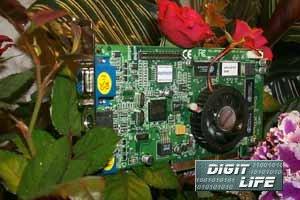 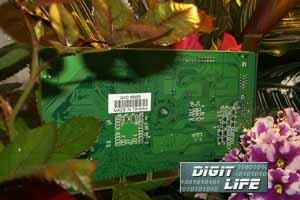 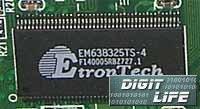 EtronTech produces memory chips with a 4 ns access time (!!), which corresponds to 250 MHz. The card has two operating modes: standard and extreme (similar to a Turbo mode of Gigabyte). The modes are switched with a utility supplied with the card. In the standard mode the card works at 200/166 MHz and is of little interest. And the extreme mode means 240/240 MHz! It should be noted that when the memory works at the frequency a little lower than the rated one according to the access time the GPU is too overclocked. That is why chips are carefully selected for these cards.  The card's design follows the reference one from NVIDIA in the layout of memory chips and the logic, but it is still a proprietary design of Gainward, since the main distinguishing feature shown in the suffix VIVO is a support of multimedia functions of video stream receipt and sampling and displaying an image on a TV screen. These functions are supported by a Philips encoder-decoder of the 7100 series, we have already seen it on the ASUS AGP-V8200 Deluxe card. Besides, between two VGA connectors providing TwinView there is one more looking like S-Video for TV-out, but it is intended for a special adapter-splitter (it is included into the complete set), which is intended for analog signal receipt and for displaying an image on a TV screen with the S-Video and RCA connectors: 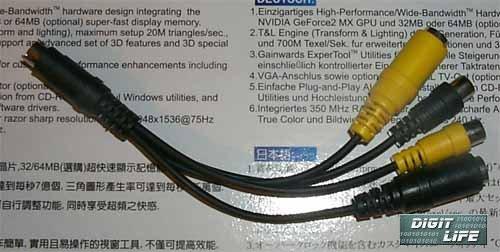 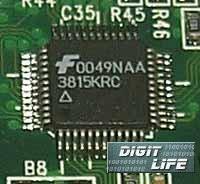 The Golden Sample supports the TwinView technology and that is why the PCB is equipped with the secondary RAMDAC of 150 MHz frequency. You can read about this technology here. The TwinView will tremendously help this card to organize a normal TV-out, when one can display an image both on a TV screen and on a monitor without giving up of high frequencies of the monitor. 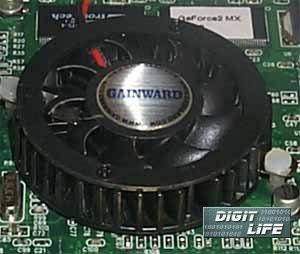  Roundish cooling devices are quite traditional for video cards. For the GPU Gainward uses a very effective cooler that you could see on ASUSTeK cards. The cooler has a stylish 3D sticker. Under the cooler there is the graphics processor NVIDIA GeForce2 MX400.  The PCB is light green. The card is supplied in a stylish Retail-package which includes:
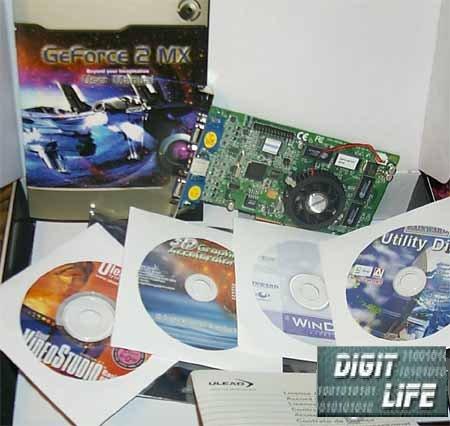 OverclockingThe Gainward CARDEXpert GeForce2 MX400 Golden Sample VIVO has reached 250/265 MHz. It is an absolute record in overclocking! Of course, such results are achieved due to the fast memory and the carefully selected chipset that works at higher rated frequencies than a traditional GeForce2 MX400. Installation and driversTest system configuration:
ViewSonic P810 (21") and ViewSonic P817 (21") monitors supplemented the test system. Software installation starts with the main menu of the installer from the CD: 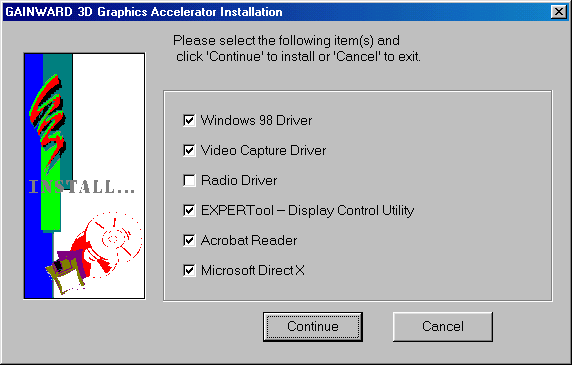 A user will be asked to choose an operating mode for the video card: standard or extreme. They differ only in frequencies: 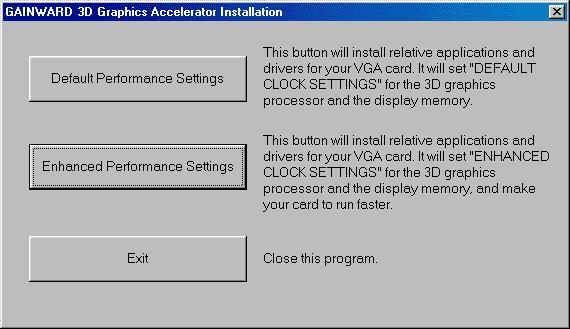 The video card is supplied together with NVIDIA drivers 12.00, and a utility EXPERTool 2.73 which allows:
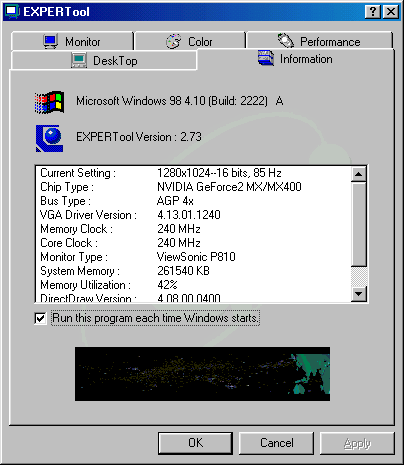  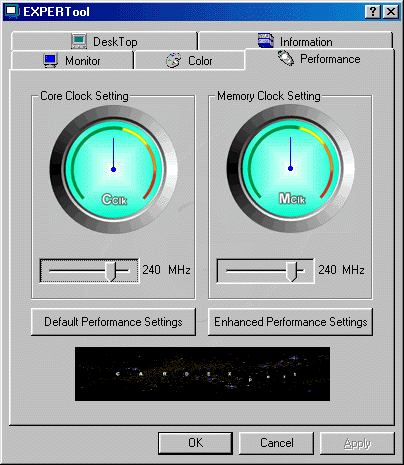  Settings of this utility are called with an icon on the right in the task bar. For testing we used drivers from NVIDIA of 12.40 version, VSync was off. For comparison the results of the following cards are given: SIGMA Cyber6000 (GeForce2 GTS), SIGMA Cyber5500 (GeForce2 MX), SUMA Platinum GeForce2 MX400, Hercules 3D Prophet II MX, Gigabyte GA-GF1280 MX400 5ns SDRAM, ATI RADEON 32 MBytes DDR. Test resultsThere is nothing to complain about in the 2D-graphics. The quality is not worse than that of other brand-name manufacturers (ASUSTeK, Leadtek etc.). I can's state that the quality is super in all samples of this model, but I hope it doesn't differ much among samples. Note that my words concern just a plain user, not a professional with a 21" monitor. Now comes 3D performance. Here we used the following programs:
Quake3 Arenademo002The tests were carried out in two modes: Fast (shows card's work in 16-bit color) and High Quality (shows card's work in 32-bit color). 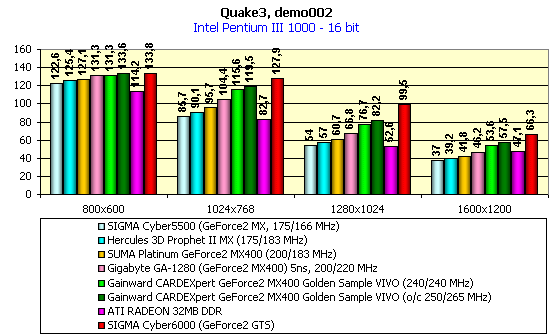 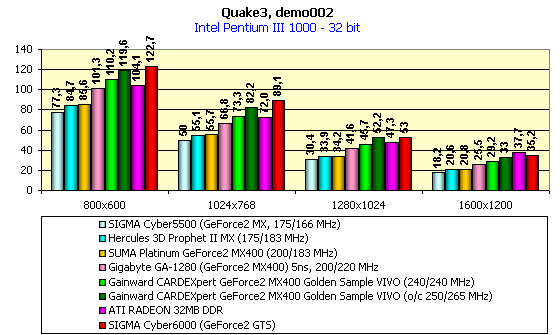 You can see that in an overclocking mode with extremely high frequencies for the GeForce2 MX series, its performance in 32-bit color it nearly at the level of the GeForce2 GTS cards. The Gainward Golden Sample has beaten the ATI RADEON 32 MBytes DDR nearly everywhere, while the later has a higher price and lacks for such features as TwinView and VIVO. Serious SamThe tests were carried out in two modes: 16-bit and 32-bit at the graphics Quality level.  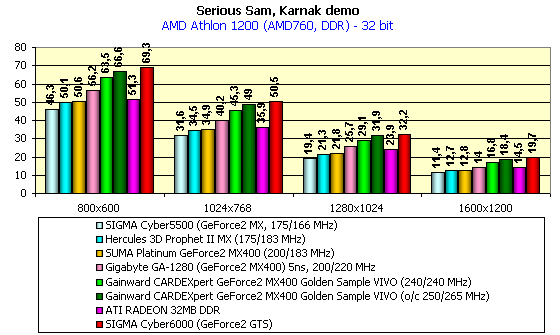 Here the situation is nearly the same, with the ATI RADEON 32 MBytes DDR falling farther behind the today's card. So, the tougher test has proved that the Gainward has the highest rank as compared with the whole GeForce2 MX series. 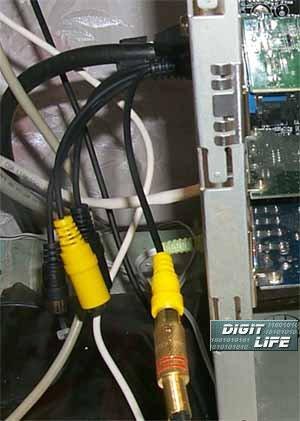 VIVOThe Golden Sample can receive analog signals and has a possibility of sampling due to the Philips 7100 chip and an adapter-splitter, black connectors of which are intended for video stream intake (and yellow ones are meant for TV-out). Among the software you can find universal video capture drivers from NVIDIA (WDM), which can be enabled in the corresponding programs for receipt and work with a video stream. One of such programs is Ulead Video Studio. This program complex is supplied with the card together with several minor utilities. The whole work for the Video servicing is done by the Video Studio.  Despite the same coder (Philips 7100) of the ASUS AGP-V8200 Deluxe card, WDM drivers from NVIDIA don't work with it (it seems that ASUSTeK has developed a special layout for its card), that is why we failed to enable the Video In of the ASUS card. But I digressed. Video capture is at the amateur's level, but possibilities of ways and formats of video clip recording are the richest. Of course, it also concerns stream compression types. The NVIDIA drivers contain a considerable list of coders they support. 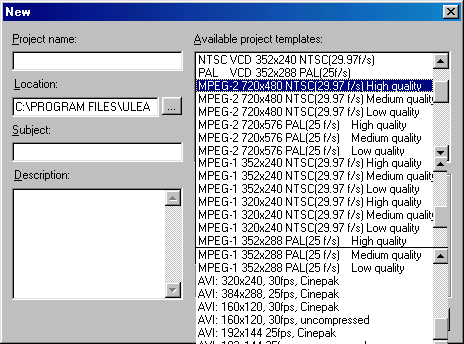 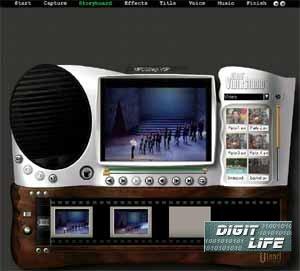 In the Ulead Video Studio you can also set a signal type (NTSC/PAL), adjust audio support (audio stream are supported with a sound card installed, of course). The Video Studio program is supplied nearly with all video cards that have Video In. Image quality needs a fine adjustment in different record cases. The disadvantage is a poor synchronization of video with audio. In all clips I recorded sound goes a bit later than video, or it intermits and then unexpectedly starts again. This artifact is absent if you are recording without compression or into MPEG1/2 but with the least possible quality :( Video capture was carried on the Pentium III-1000 system, that is why I can't say that the processor isn't powerful enough for coding. As for DVD, this card doesn't offer something special. All GeForce2 cards have DVD hardware support and the CPU utilization doesn't exceed 23-27%. The Gainward card is supplied with WinDVD 2000 player that excellently works with the GPU from NVIDIA, that is why the image quality was wonderful and CPU was loaded at 24%. ConclusionMany video card manufacturers try to draw attention to their cards by realizing new solutions. But while almost all companies have chosen a way of increasing frequencies of the memory and the processor, Gainward has its own way. This way of extreme lifting of frequencies up to the maximum possible goes well with additional functions of video capture and image displaying on a TV screen, and TwinView support. The company refused to increase video memory up to 64 MBytes, as it is popular now, since there is no sense in it. I hope you share my point of view that the card is leading in the performance among the whole GeForce2 MX family. Besides, a unique VIVO support ensures that the card will have a great success. Note that this model costs less than $120! For more detailed comparison of cards of this and other classes refer to our 3Digest. Highs:
Lows:
Write a comment below. No registration needed!
|
Platform · Video · Multimedia · Mobile · Other || About us & Privacy policy · Twitter · Facebook Copyright © Byrds Research & Publishing, Ltd., 1997–2011. All rights reserved. |